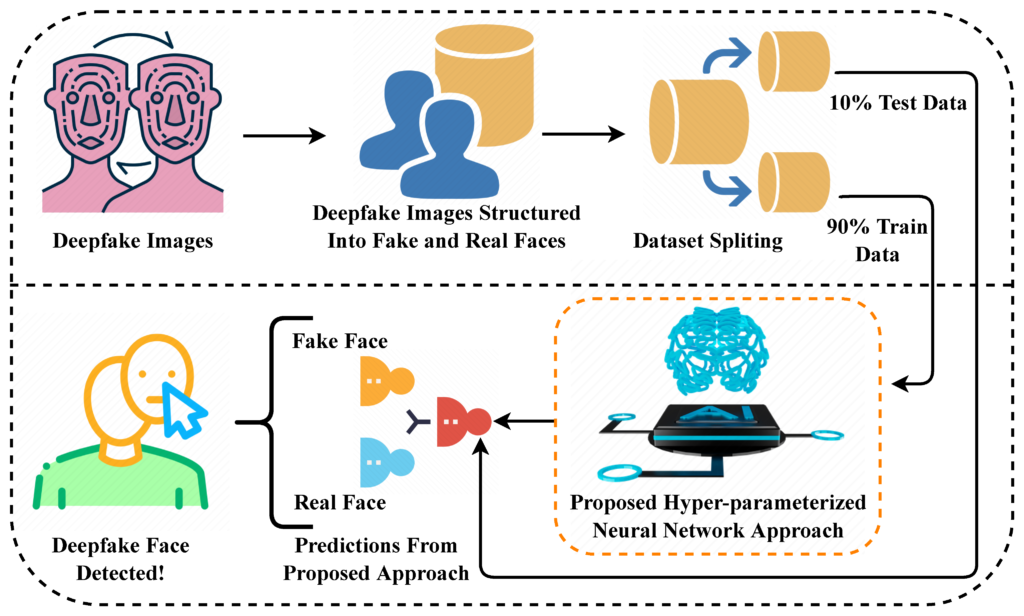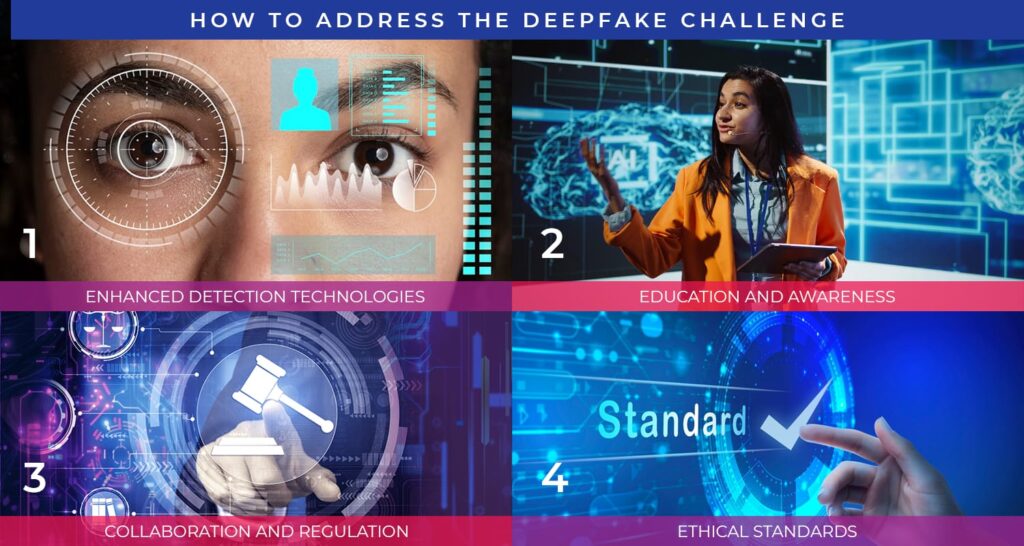Table of Contents
Impact of Deepfakes on Search Results: Deepfakes are reshaping how we interact with digital content. These sophisticated AI-generated media can make anyone say or do anything, leading to serious concerns about the integrity of information on the internet. As deepfakes become more prevalent, their impact on search results and online information is becoming increasingly evident. In this article, we’ll explore the Impact of Deepfakes on Search Results, the challenges they pose, and strategies to address these issues.
What Are Deepfakes?
Deepfakes refer to media—usually videos or audio recordings—created using artificial intelligence to manipulate or generate content that appears to be real but is entirely fabricated. The term “deepfake” is derived from “deep learning” and “fake,” reflecting the use of deep learning techniques to create these deceptive media.
How Deepfakes Work
Deepfakes are typically created using deep learning models called Generative Adversarial Networks (GANs). GANs consist of two neural networks: a generator and a discriminator. The generator creates fake content, while the discriminator evaluates its authenticity. Through continuous iterations, the generator improves its ability to produce content that closely resembles real media, making deepfakes increasingly convincing.
The Rise of Deepfakes in Search Results
As deepfakes become more sophisticated, they are beginning to infiltrate search results, creating challenges for users trying to discern accurate information. Here’s a closer look at how deepfakes impact search results:
1. Distortion of Information
Deepfakes can significantly distort information by presenting false or misleading content as truth. For example, a deepfake video of a public figure making controversial statements can spread misinformation quickly. When such deepfake content appears in search results, it can mislead users and affect public perception.
2. Manipulation of Search Algorithms
Malicious actors can exploit deepfakes to manipulate search algorithms. By creating and uploading numerous deepfake videos or audio files, they can potentially flood search results with deceptive content. This manipulation can obscure legitimate information and make it difficult for users to find trustworthy sources, undermining the goals of Google’s recent SEO updates aimed at improving content authenticity.
3. Erosion of Credibility
The prevalence of deepfakes is contributing to a general erosion of trust in online content. As users become more skeptical of the authenticity of what they see, it becomes harder to differentiate between genuine and manipulated media. This widespread skepticism can undermine the credibility of even reputable sources.
4. Increased Demand for Verification
In response to the growing threat of deepfakes, there is an increasing demand for tools and methods to verify the authenticity of digital media. Search engines, social media services, and content creators are investing in advanced technologies to detect and flag deepfake content, aiming to maintain the integrity of search results. By enhancing the verification processes across these platforms, we can better protect users from misinformation and ensure a more trustworthy online environment.
Read More: Local SEO vs. Global SEO
Techniques for Detecting Deepfakes

Source: mdpi
Detecting deepfakes is a complex task, but several methods and tools have been developed to identify manipulated content. Here are some of the most effective techniques:
1. Visual and Audio Artifacts Analysis
Deepfakes often leave subtle visual and audio artifacts that can be detected through careful analysis:
- Pixel-Level Analysis: Analyzing inconsistencies in color, lighting, and shadows can reveal signs of manipulation.
- Blinking and Facial Movements: Early deepfake models struggled with realistic eye blinking and facial movements, though newer models have improved in this area.
- Audio Irregularities: Deepfake audio may have inconsistencies in pitch, tone, or synchronization with lip movements.
2. AI and Machine Learning Algorithms
AI and machine learning play a crucial role in detecting deepfakes:
- Convolutional Neural Networks (CNNs): CNNs are trained on large datasets to identify patterns and anomalies in media.
- Recurrent Neural Networks (RNNs): RNNs analyze temporal dynamics in videos to detect irregularities.
- Ensemble Learning: Combining multiple AI models can improve detection accuracy.
3. Deepfake Detection Tools
Several tools and platforms are available for detecting deepfakes:
- Sensity AI: Provides real-time detection and an API for integration into various platforms.
- Microsoft Video Authenticator: Analyzes videos for subtle signs of manipulation and provides a confidence score.
- Deepware Scanner: A user-friendly app for scanning and analyzing potential deepfakes on mobile devices.
- Reality Defender: Offers browser extensions and enterprise solutions for deepfake detection.
4. Blockchain for Media Authentication
Blockchain technology can be used to verify the authenticity of digital media:
- Digital Watermarks: Embed invisible watermarks or digital signatures in content to track authenticity.
- Blockchain Ledger: Maintain a tamper-proof record of media files from their source, allowing users to verify their integrity.
5. Metadata and Provenance Analysis
Examining metadata and file history can help identify manipulated content:
- Metadata Examination: Inconsistencies in timestamps or location data may indicate tampering.
- File Provenance: Analyzing the editing history and compression patterns of a file can reveal alterations.
6. Human Expertise and Forensics
While AI tools are powerful, human analysis remains critical:
- Expert Review: Professional fact-checkers and forensic analysts use context and domain knowledge to identify deepfakes that may evade automated detection.
The Challenges of Deepfake Detection

Despite advances in detection technology, several challenges remain in addressing deepfakes:
1. Adversarial Deepfakes
Deepfake creators continuously evolve their techniques to bypass detection algorithms. Adversarial examples are designed to fool AI detectors, making it an ongoing battle between detection technology and deepfake creation methods.
2. Generalization Issues
Detection algorithms may work well on specific types of deepfakes but struggle with new or novel methods. Ensuring that detection tools generalize across various deepfake techniques is a significant challenge.
3. Ethical and Legal Considerations
The rise of deepfakes raises ethical and legal concerns, including privacy issues and potential for defamation. Developing regulations and guidelines to address these concerns while preserving freedom of expression is a complex task.
Addressing the Deepfake Challenge
To effectively combat the impact of deepfakes on search results and online information, a multi-faceted approach is needed:
1. Enhanced Detection Technologies
Investing in and developing advanced detection technologies is crucial. Continuous improvement and innovation in AI and machine learning will help stay ahead of deepfake creators.
2. Education and Awareness
Raising awareness about deepfakes and their potential impact can help users become more critical and discerning consumers of digital content. Education on recognizing deepfakes and verifying information is essential.
3. Collaboration and Regulation
Collaboration between technology companies, researchers, and policymakers is necessary to develop effective regulations and guidelines for deepfake detection and prevention. Establishing industry standards and best practices can help address the challenges posed by deepfakes.
4. Ethical Standards
Developing ethical standards for the creation and use of AI-generated content is important to ensure that technology is used responsibly and does not undermine trust in digital media.
Conclusion
Deepfakes represent a significant challenge for search results and online information integrity. As these AI-generated media become more sophisticated, their impact on how we perceive and trust digital content will continue to grow. Addressing this challenge requires a combination of advanced detection technologies, public awareness, collaboration, and ethical considerations. Webhooters Digital Marketing Agency stays informed and proactive in helping brands navigate these challenges, ensuring the credibility and accuracy of digital content.
Deepfakes are not just a technological issue but a societal one, influencing how we interact with media and information. As we navigate this evolving landscape, a collective effort to understand, detect, and mitigate the impact of deepfakes on search results will be crucial in preserving the integrity of our digital world
















